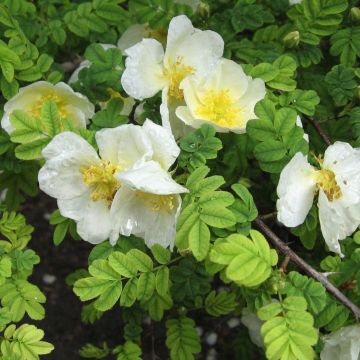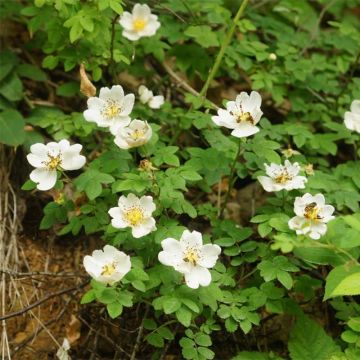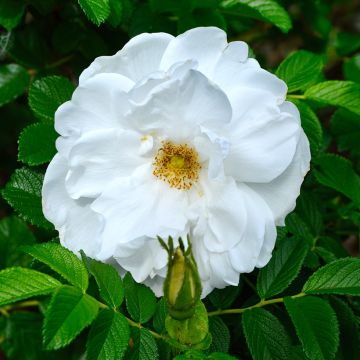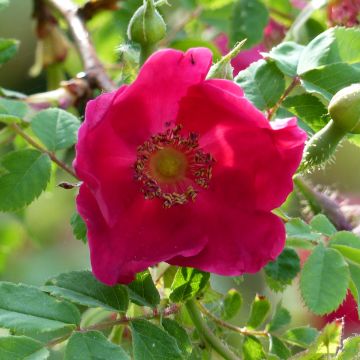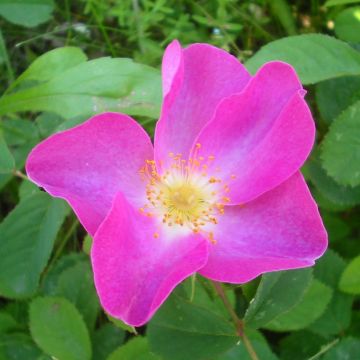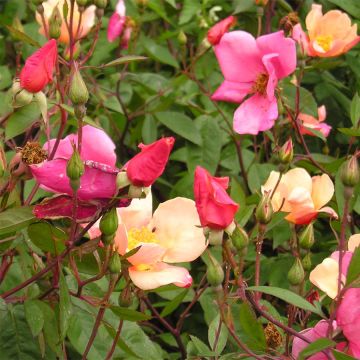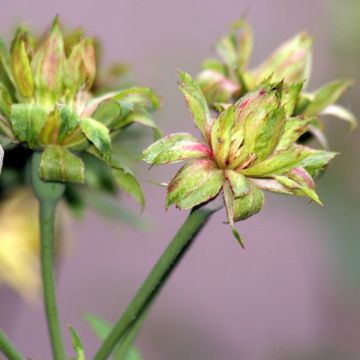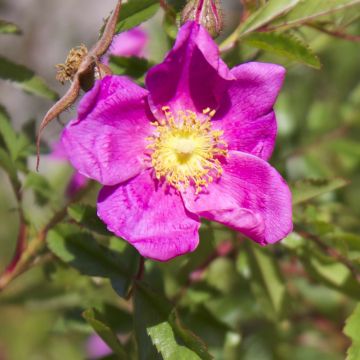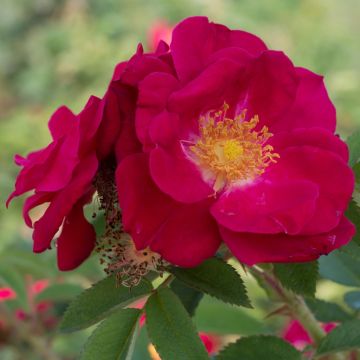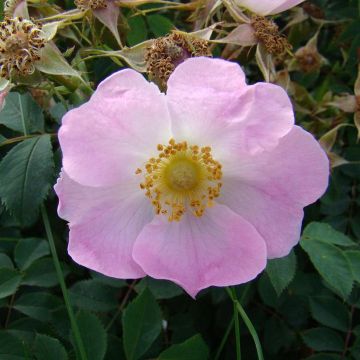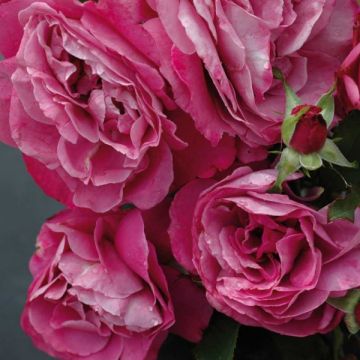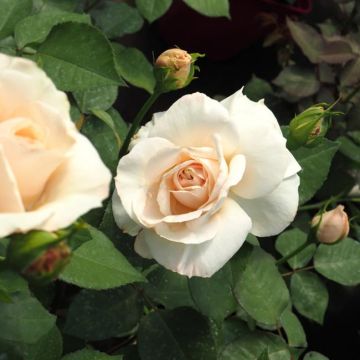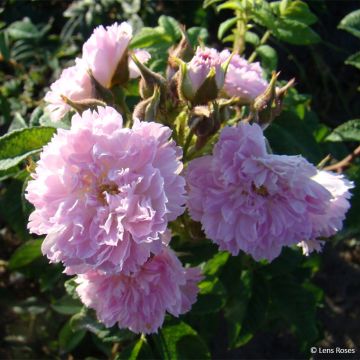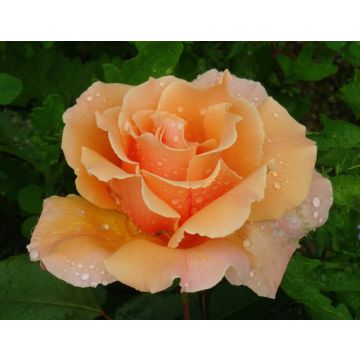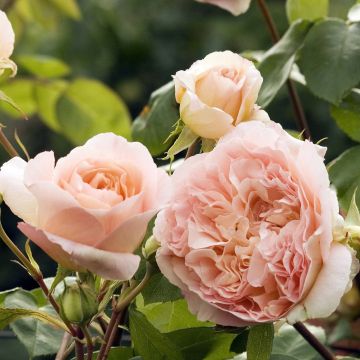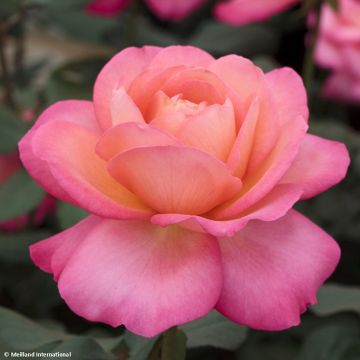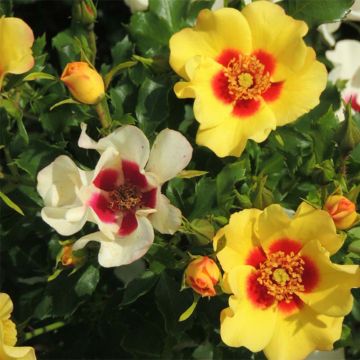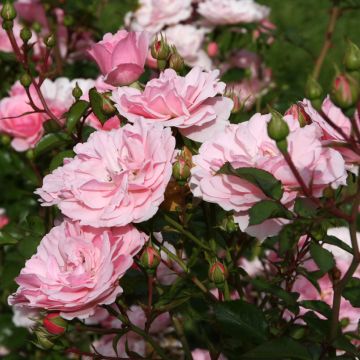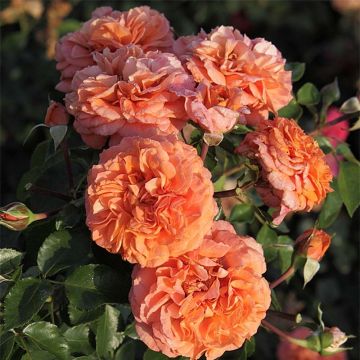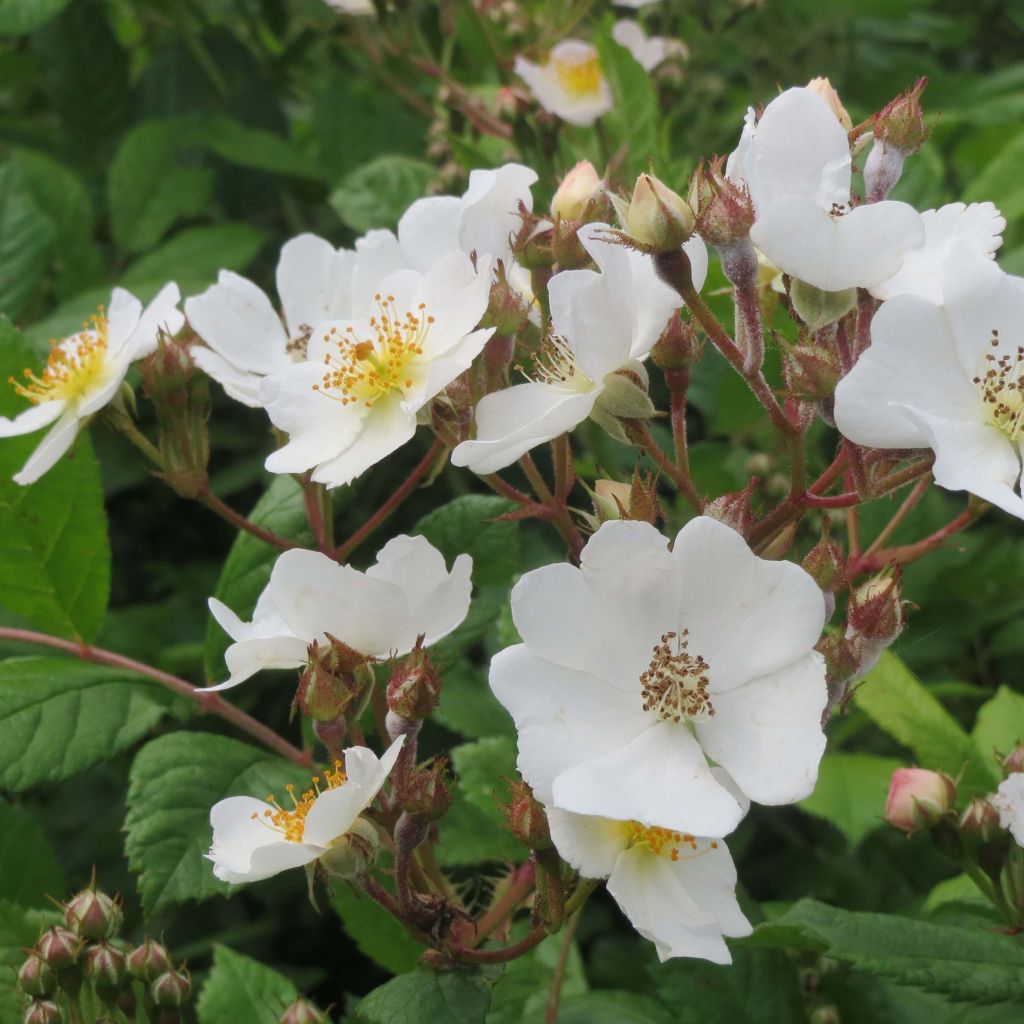

Rosa multiflora - Climbing Rose
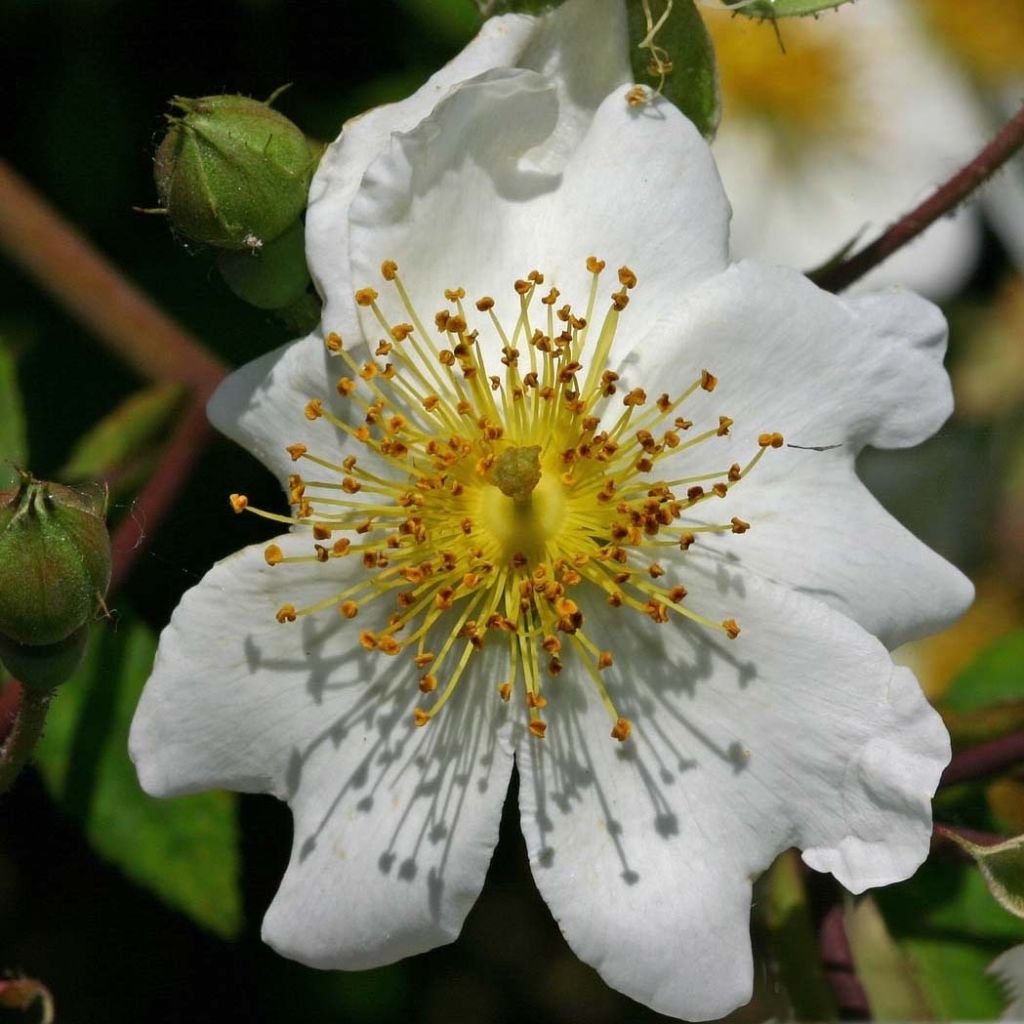

Rosa multiflora - Climbing Rose
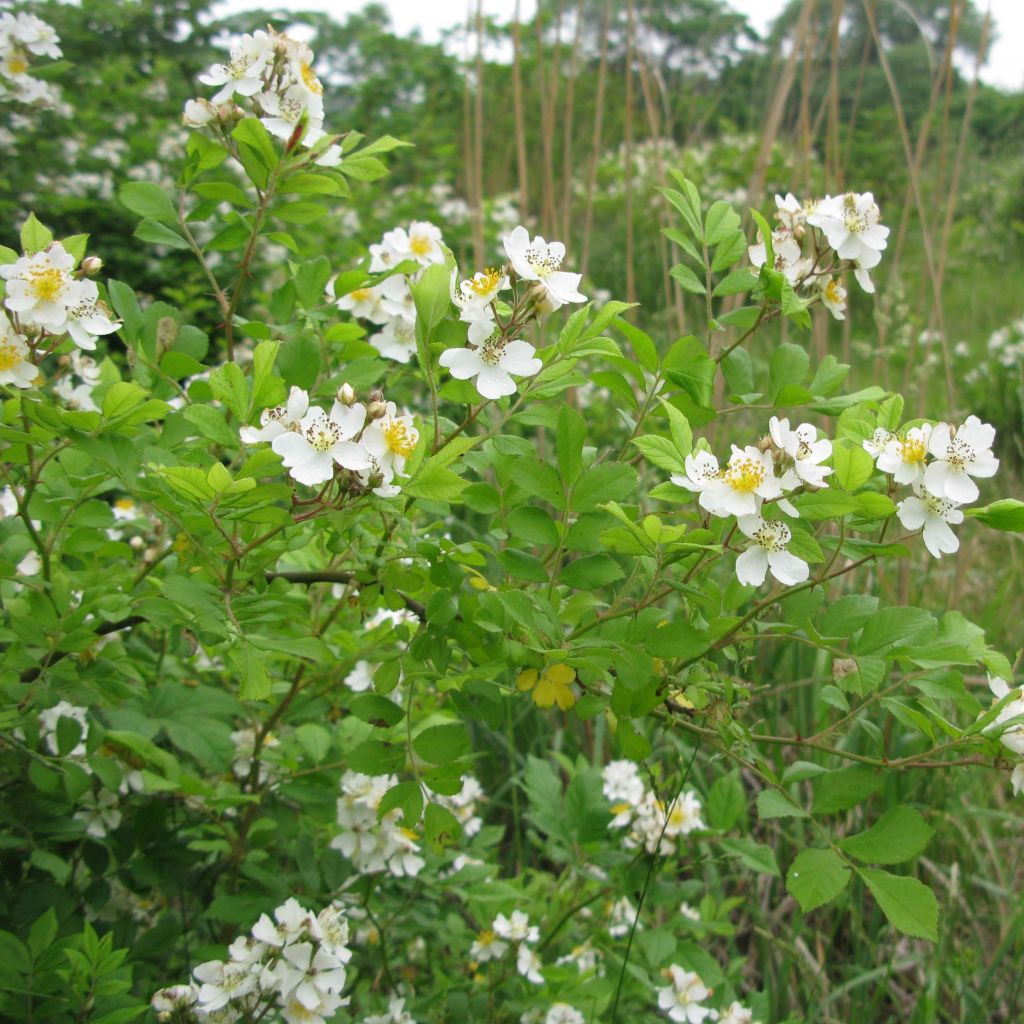

Rosa multiflora - Climbing Rose
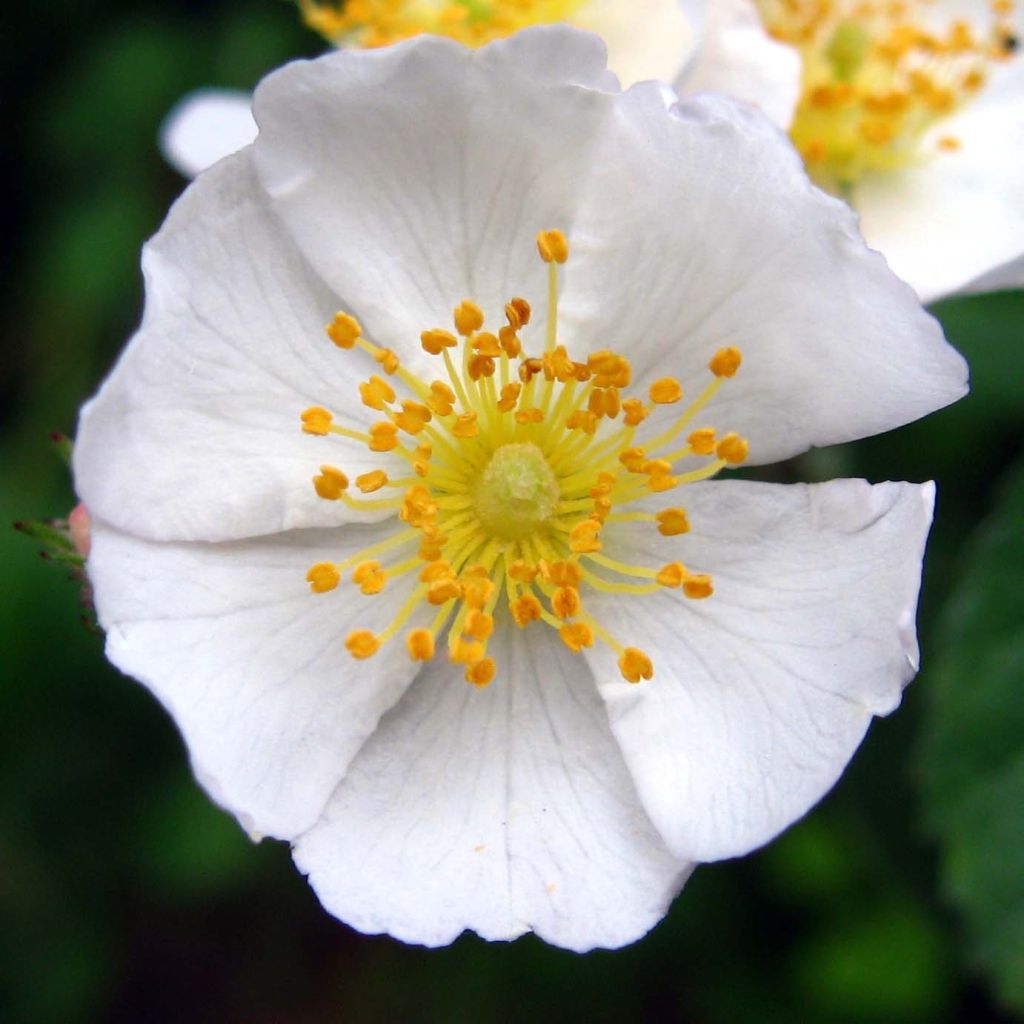

Rosa multiflora - Climbing Rose
Rosa multiflora - Climbing Rose
Rosa multiflora
Multiflora Rose, Japanese Rose, Baby Rose, Seven-sisters Rose, Many-flowered Rose
The rose young plant did not come back.
Sandrine , 09/06/2024
Why not try an alternative variety in stock?
View all →This plant carries a 24 months recovery warranty
More information
We guarantee the quality of our plants for a full growing cycle, and will replace at our expense any plant that fails to recover under normal climatic and planting conditions.
From €5.90 for pickup delivery and €6.90 for home delivery
Express home delivery from €8.90.
Delivery to Corse prohibited: UE law prohibits the import of this plant from mainland France to Corse as part of the fight against Xylella fastidiosa. Please accept our sincere apologies.
More information
Does this plant fit my garden?
Set up your Plantfit profile →
Description
The Rosa multiflora, also known as the multiflora rose, is an extremely robust and vigorous climbing species, very floriferous in early summer, adaptable to many situations. A true force of nature, it is often used as a rootstock to support the growth of more delicate roses, which draw all the strength they need through its powerful roots. The plant offers an abundance of large clusters of slightly fragrant white flowers, followed by decorative clusters of red hips in autumn. It can be used in any natural landscape scene, to cover an old tree, enliven a hedgerow, or freely adorn a neglected spot in the garden. Its only enemy is limestone, which causes its leaves to yellow and the plant to wither.
The Rosa multiflora, from the rose family, is native to the Far East. It is native to China, Taiwan, Japan, and Korea. It is the parent of many varieties of climbing roses, as well as polyantha roses. It can reach a height of 5m (16 in 5 ft), with a spread of 3m (9 in 10 ft). Its runner-like and arching branches, covered in thorns, emerge from the base and produce new ones every year. The leaves, 5 to 10 cm (2 - 3.9 in) long, are divided into 5 to 9 toothed leaflets. They turn yellow in autumn before falling. The flowering is not repeat-flowering, but flowers in June-July, with very abundant and slightly fragrant blooms. The 2-3 cm (0.8 - 1.2 in) diameter flowers are single and gathered in large pyramidal clusters called corymbs. They have a delicate ivory colour at when the flowers first open, then fade slightly to white. The flower's centre is decorated with a visible bouquet of golden yellow stamens, visited by bees. The flowering is followed by the formation of a fleshy false fruit called a hip, 6 to 8 mm (0.2 - 0.3 in) in diameter, which turns purplish-red when ripe. It contains a large quantity of seeds that will be spread by birds.
The Rosa multiflora is a wild rose with a free-spirited charm that thrives wherever it pleases. Like other climbing or rambling roses, it is unrivalled for filling large spaces and giving a touch of abandonment, planted above formal flowerbeds. It is an ideal companion for dead trees that it will revive, uncertain fences, and ugly buildings or sheds to which it brings a charming appeal. Since its flowering only lasts for a month, it can be paired with a clematis with large flowers (such as Clematis The President or Jackmanii Superba...) whose summer flowering will take over until autumn.
Report an error about the product description
Rosa multiflora - Climbing Rose in pictures
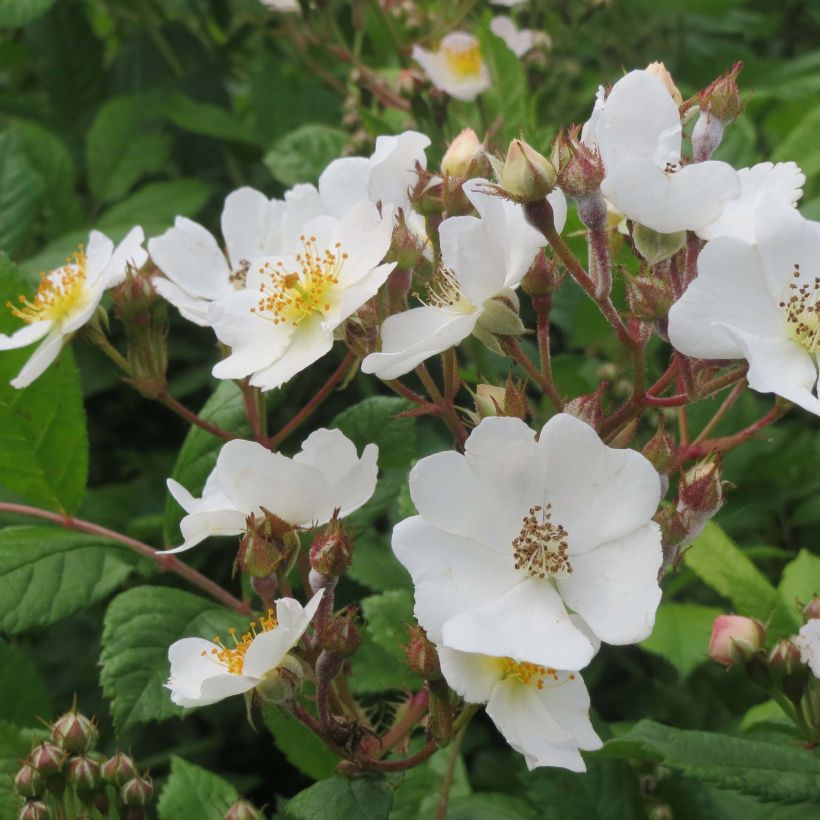



Plant habit
Flowering
Foliage
Botanical data
Rosa
multiflora
Rosaceae
Multiflora Rose, Japanese Rose, Baby Rose, Seven-sisters Rose, Many-flowered Rose
East Asia
Other Botanical or wild Roses
Planting and care
The multiflora rose adapts to any type of non-chalky soils, even heavy or sandy, as long as the planting is done properly and it is not lacking in water or nutrients at the beginning. Plant it in well-worked soil in a sunny or semi-shaded location. Plant it in autumn, never when it is freezing, or in early spring.
The 2-year-old branches are the most floriferous. It is useful to shorten the stems that flowered the previous year to 3 or 4 buds, or pruned to 15 cm (5.9 in). The new sturdy stems will be trained and the old ones removed if necessary. It may be useful to remove dead wood in winter and remove faded flowers if hips are not desired. If necessary, in spring, after the risk of frost, a light pruning can be done. Alternatively, climbing roses can be allowed to grow freely if there is ample space.
If you plant a climbing rose next to a living tree, the rose's root system will compete with that of the already well-established tree. To control watering, here's a tip: plant the rose in a large container with a perforated bottom, at the base of the tree. The tree roots will not penetrate the container for at least a year. Remove the container after 1 year, for example by cutting one side, without disturbing the rose's root system. The rose will have had time to develop its root system deep into the soil and will be more resistant.
If you notice stains or unsightly marks on your roses towards the end of summer, don't worry - it won't harm the rose's growth. These blemishes are natural and common.
Planting period
Intended location
Care
-
, onOrder confirmed
Reply from on Promesse de fleurs
Roses by purpose
Haven't found what you were looking for?
Hardiness is the lowest winter temperature a plant can endure without suffering serious damage or even dying. However, hardiness is affected by location (a sheltered area, such as a patio), protection (winter cover) and soil type (hardiness is improved by well-drained soil).

Photo Sharing Terms & Conditions
In order to encourage gardeners to interact and share their experiences, Promesse de fleurs offers various media enabling content to be uploaded onto its Site - in particular via the ‘Photo sharing’ module.
The User agrees to refrain from:
- Posting any content that is illegal, prejudicial, insulting, racist, inciteful to hatred, revisionist, contrary to public decency, that infringes on privacy or on the privacy rights of third parties, in particular the publicity rights of persons and goods, intellectual property rights, or the right to privacy.
- Submitting content on behalf of a third party;
- Impersonate the identity of a third party and/or publish any personal information about a third party;
In general, the User undertakes to refrain from any unethical behaviour.
All Content (in particular text, comments, files, images, photos, videos, creative works, etc.), which may be subject to property or intellectual property rights, image or other private rights, shall remain the property of the User, subject to the limited rights granted by the terms of the licence granted by Promesse de fleurs as stated below. Users are at liberty to publish or not to publish such Content on the Site, notably via the ‘Photo Sharing’ facility, and accept that this Content shall be made public and freely accessible, notably on the Internet.
Users further acknowledge, undertake to have ,and guarantee that they hold all necessary rights and permissions to publish such material on the Site, in particular with regard to the legislation in force pertaining to any privacy, property, intellectual property, image, or contractual rights, or rights of any other nature. By publishing such Content on the Site, Users acknowledge accepting full liability as publishers of the Content within the meaning of the law, and grant Promesse de fleurs, free of charge, an inclusive, worldwide licence for the said Content for the entire duration of its publication, including all reproduction, representation, up/downloading, displaying, performing, transmission, and storage rights.
Users also grant permission for their name to be linked to the Content and accept that this link may not always be made available.
By engaging in posting material, Users consent to their Content becoming automatically accessible on the Internet, in particular on other sites and/or blogs and/or web pages of the Promesse de fleurs site, including in particular social pages and the Promesse de fleurs catalogue.
Users may secure the removal of entrusted content free of charge by issuing a simple request via our contact form.
The flowering period indicated on our website applies to countries and regions located in USDA zone 8 (France, the United Kingdom, Ireland, the Netherlands, etc.)
It will vary according to where you live:
- In zones 9 to 10 (Italy, Spain, Greece, etc.), flowering will occur about 2 to 4 weeks earlier.
- In zones 6 to 7 (Germany, Poland, Slovenia, and lower mountainous regions), flowering will be delayed by 2 to 3 weeks.
- In zone 5 (Central Europe, Scandinavia), blooming will be delayed by 3 to 5 weeks.
In temperate climates, pruning of spring-flowering shrubs (forsythia, spireas, etc.) should be done just after flowering.
Pruning of summer-flowering shrubs (Indian Lilac, Perovskia, etc.) can be done in winter or spring.
In cold regions as well as with frost-sensitive plants, avoid pruning too early when severe frosts may still occur.
The planting period indicated on our website applies to countries and regions located in USDA zone 8 (France, United Kingdom, Ireland, Netherlands).
It will vary according to where you live:
- In Mediterranean zones (Marseille, Madrid, Milan, etc.), autumn and winter are the best planting periods.
- In continental zones (Strasbourg, Munich, Vienna, etc.), delay planting by 2 to 3 weeks in spring and bring it forward by 2 to 4 weeks in autumn.
- In mountainous regions (the Alps, Pyrenees, Carpathians, etc.), it is best to plant in late spring (May-June) or late summer (August-September).
The harvesting period indicated on our website applies to countries and regions in USDA zone 8 (France, England, Ireland, the Netherlands).
In colder areas (Scandinavia, Poland, Austria...) fruit and vegetable harvests are likely to be delayed by 3-4 weeks.
In warmer areas (Italy, Spain, Greece, etc.), harvesting will probably take place earlier, depending on weather conditions.
The sowing periods indicated on our website apply to countries and regions within USDA Zone 8 (France, UK, Ireland, Netherlands).
In colder areas (Scandinavia, Poland, Austria...), delay any outdoor sowing by 3-4 weeks, or sow under glass.
In warmer climes (Italy, Spain, Greece, etc.), bring outdoor sowing forward by a few weeks.

































